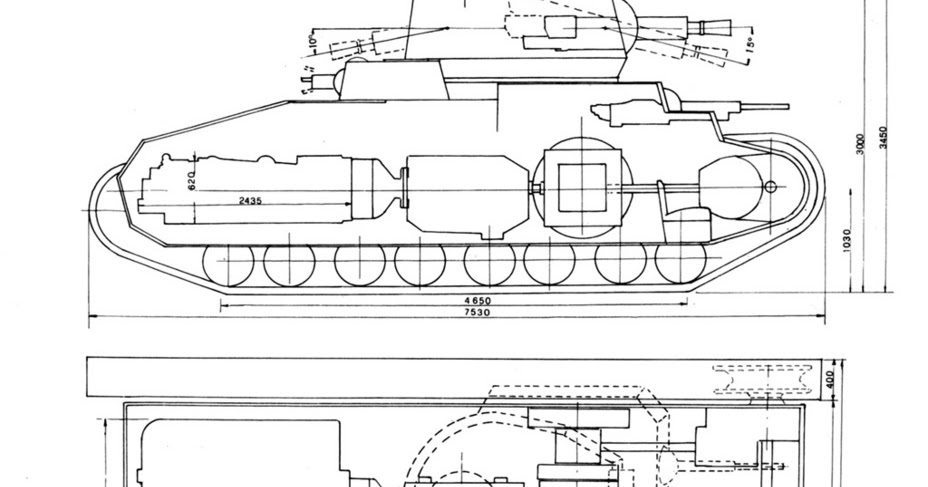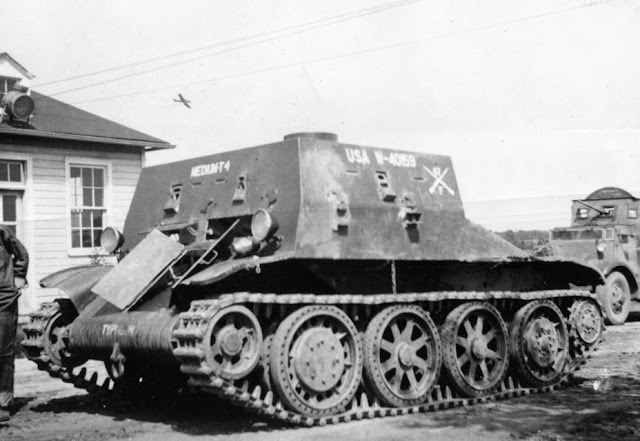Which suspension system do you think would have been best for the Italians to upgrade to in say early 1940-41?Christie suspension is a nightmare to repair and takes up space inside the cabin.
Spring bogies are easy to replace in the field but have limited travel.
Torsion bar suspension is simple and maintenance-free but you can't have a floor escape hatch and when it breaks you can't fix it in the field.
Hydrodynamic suspension (like on the British Challenger) is easy to replace and requires little maintenance other than a regular topping-up.
You are using an out of date browser. It may not display this or other websites correctly.
You should upgrade or use an alternative browser.
You should upgrade or use an alternative browser.
Alternative History Armoured Fighting Vehicles Part 3
- Thread starter Claymore
- Start date
- Status
- Not open for further replies.
Unknown. I refer you to the previous discussion by people more knowledgeable than I.Which suspension system do you think would have been best for the Italians to upgrade to in say early 1940-41?
Fair enough. I would think torsion bar because the Germans could give them advice but I'm no expert either.Unknown. I refer you to the previous discussion by people more knowledgeable than I.
marathag
Banned
Fair enough. I would think torsion bar because the Germans could give them advice but I'm no expert either.
the L6/40 with Torsion Bars, on a 7 ton tank
marathag
Banned
Since leaf springs worked for the Panzer Mk IV thru the end of the war, stick with that.Which suspension system do you think would have been best for the Italians to upgrade to in say early 1940-41?
Cheap and fast to build.
They needed to work on higher HP engines and welding.
One gives you more power, and welding saves weight.
That translates into larger, better armored tanks with a better gun.
But 1940 is pretty late
this was their 26 ton 'Heavy' tank with 50mm armor and a 75mm/L34. Two man turret
So a little worse than a Sherman, but this wasn't produced in number before they surrendered.
Thanks for nothing, FIAT
Good reading here

Heavy Tank, Italian Style
A blog about World War II era archive documents, primarily dealing with armoured warfare.
Last edited:
Wasn't really FIAT's fault. More like the High Commands fault. It was also 2 years behind what the British could do...Since leaf springs worked for the Panzer Mk IV thru the end of the war, stick with that.
Cheap and fast to build.
They needed to work on higher HP engines and welding.
One gives you more power, and welding saves weight.
That translates into larger, better armored tanks with a better gun.
But 1940 is pretty late
View attachment 710437
this was their 26 ton 'Heavy' tank with 50mm armor and a 75mm/L34. Two man turret
So a little worse than a Sherman, but this wasn't produced in number before they surrendered.
Thanks for nothing, FIAT
Good reading here

Heavy Tank, Italian Style
A blog about World War II era archive documents, primarily dealing with armoured warfare.www.tankarchives.ca
I still don't see any reference to wheel travel in these pictures. Only numbers are track width and pitch, ground contact length and extra weight.View attachment 710384View attachment 710385
The T4 was the Convertible tank of the mid '30s

So you have similar wheel travel, and the size difference of the springs is obvious
Christie is only hard to replace and takes more space if it's mounted internally, which it doesn't need to. And when mounted internally it is at least safe from rocks, dust and bullets that could damage the outer surface of the spring and cause failure down the line, it's a tradeoff.Christie suspension is great but a nightmare to repair and takes up space inside the cabin.
Spring bogies are easy to replace in the field but have limited travel.
Torsion bar suspension is simple and maintenance-free but you can't have a floor escape hatch and when it breaks you can't fix it in the field.
Hydropneumatic suspension (like on the British Challenger) is easy to replace and requires little maintenance other than a regular topping-up.
Outside, it is no larger than a bogie with coil springs in it.
You can fix torsion bars in the field, there are Russian demonstrations on Youtube showing that.
Honestly, unless the proposed tank is going to mass more than 50 tons, leaf springs should still be totally viable and reliable. I imagine there's a lot you can do with the swingarm geometry to improve the ride quality of your suspension without needing a totally different suspension paradigm.Which suspension system do you think would have been best for the Italians to upgrade to in say early 1940-41?
Correct me if I'm wrong, but doesn't torsion bar suspension require some pretty high quality standards to be reliable? This isn't a knock against it, I'm thinking of what Italy's position in 1940 is and if the quality control on its vehicle metallurgy is there. Should be easier to test/maintain quality on smaller spring leaves than longer torsion bars is where my mind is at. "Oh, one of the leaves snapped, we can still move" is a very different proposition to "Oh, the torsion bar's snapped, that wheel's effectively dead and we risk throwing a track."
Going completely across the border and off-topic, I was suddenly struck by how the Citroen 2CV's suspension is rather like HVSS in concept, even if it uses coil springs and not volute. Anyone else notice "tank suspension" in surprising places?
torsion bar suspension in the delorean door mechanismGoing completely across the border and off-topic, I was suddenly struck by how the Citroen 2CV's suspension is rather like HVSS in concept, even if it uses coil springs and not volute. Anyone else notice "tank suspension" in surprising places?
Panzer Mk IV had a torsion bar suspension.Since leaf springs worked for the Panzer Mk IV thru the end of the war, stick with that.
Perhaps you were thinking of the Panzer Mk II, in which models A through C and F had spring suspensions, models D and E had torsion bars.
Garrison
Donor
So here is a sort of quick reference to the alt tanks from the Munich Shuffle TL and as you can probably tell the top two are my cut and paste efforts and the bottom pair are the rather more elegant efforts of @cortz#9 :

Now in addition to the above the British are planning to introduce the 6pdr gun on the Crusader and Valentine ASAP, with the first examples turning up in North Africa sometime in 1941. The Germans are likewise upgunning the Pz III and Pz IV and planning the alt Tiger. The Tiger special isn't on the cards at the same time these models are being proposed/designed. hence its not included above (and putting 5 tanks on one image wasn't symmetrical ).
).
So overall the question is what impact will these alternates have elsewhere? The British will of course share some of their plans with the Americans and while they don't know what the Germans are doing they are correctly assuming the Germans will be doing much the same thing. How might this affect development of tanks like the Lee/Grant? How will the Red Army respond to better protected and armed German tanks?
Now in addition to the above the British are planning to introduce the 6pdr gun on the Crusader and Valentine ASAP, with the first examples turning up in North Africa sometime in 1941. The Germans are likewise upgunning the Pz III and Pz IV and planning the alt Tiger. The Tiger special isn't on the cards at the same time these models are being proposed/designed. hence its not included above (and putting 5 tanks on one image wasn't symmetrical
So overall the question is what impact will these alternates have elsewhere? The British will of course share some of their plans with the Americans and while they don't know what the Germans are doing they are correctly assuming the Germans will be doing much the same thing. How might this affect development of tanks like the Lee/Grant? How will the Red Army respond to better protected and armed German tanks?
Honestly, unless the proposed tank is going to mass more than 50 tons, leaf springs should still be totally viable and reliable. I imagine there's a lot you can do with the swingarm geometry to improve the ride quality of your suspension without needing a totally different suspension paradigm.
Correct me if I'm wrong, but doesn't torsion bar suspension require some pretty high quality standards to be reliable? This isn't a knock against it, I'm thinking of what Italy's position in 1940 is and if the quality control on its vehicle metallurgy is there. Should be easier to test/maintain quality on smaller spring leaves than longer torsion bars is where my mind is at. "Oh, one of the leaves snapped, we can still move" is a very different proposition to "Oh, the torsion bar's snapped, that wheel's effectively dead and we risk throwing a track."
Going completely across the border and off-topic, I was suddenly struck by how the Citroen 2CV's suspension is rather like HVSS in concept, even if it uses coil springs and not volute. Anyone else notice "tank suspension" in surprising places?
Considering that Rheinmetall Borsig's design bureau went as far as designing a version of Aleksei Surin's leaf spring suspension (used on Pz 38(t) and other CKD products) for Panther and Tiger II (sic!), there is pretty much no realistic weight limit in the end. Too bad there's no info on the travel it would allow.

Note that the wheels are interleaved without overlapping so they still improve weight distribution without making wheel removal more complicated.
I certainly believe one could improve leaf spring suspensions over the types usually used in WW2, since most countries ceased development on them early in the war in favor of of other types and the leaf spring layouts that remained weren't exactly progressive compared to what one could do with them.
I don't know exactly what we could improve on for the springs and accessories themselves, but I think one could easily improve on the layout used by Italy at least.
You could use less, but bigger wheels and only 2 per bogie instead of the 4 small wheels on two bogies connected to one bogie as done by the Italians (dates back to the Vickers 6-ton they evolved from). Bigger wheels would address wheel rim wear at high speeds and would cross higher obstacles, and using less wheels per bogie would allow greater flexibility in the placement of the wheels (spacing) and allow greater maximum travel. I'd say that upscaled suspension for Tiger II fits the bill quite well.
Using an upscaled Pz II suspension (so no bogies at all) might be even better, but sadly it never made it to heavier tanks so we don't know how well it'd compare to other solutions.
At least the Soviets said this of it: "The suspension is original, simple, and ensures a constant contact between the tracks and the wheels. The compactness and dampening qualities of this suspension had advantages over torsion bar suspensions [of the time, that is 1939]. It provided for a smooth ride and dampened oscillations quickly, despite its light weight. The leaf spring suspension was compact and light, as were the aluminium alloy road wheels."
Note that the wheels are interleaved without overlapping so they still improve weight distribution without making wheel removal more complicated.
I certainly believe one could improve leaf spring suspensions over the types usually used in WW2, since most countries ceased development on them early in the war in favor of of other types and the leaf spring layouts that remained weren't exactly progressive compared to what one could do with them.
I don't know exactly what we could improve on for the springs and accessories themselves, but I think one could easily improve on the layout used by Italy at least.
You could use less, but bigger wheels and only 2 per bogie instead of the 4 small wheels on two bogies connected to one bogie as done by the Italians (dates back to the Vickers 6-ton they evolved from). Bigger wheels would address wheel rim wear at high speeds and would cross higher obstacles, and using less wheels per bogie would allow greater flexibility in the placement of the wheels (spacing) and allow greater maximum travel. I'd say that upscaled suspension for Tiger II fits the bill quite well.
Using an upscaled Pz II suspension (so no bogies at all) might be even better, but sadly it never made it to heavier tanks so we don't know how well it'd compare to other solutions.
At least the Soviets said this of it: "The suspension is original, simple, and ensures a constant contact between the tracks and the wheels. The compactness and dampening qualities of this suspension had advantages over torsion bar suspensions [of the time, that is 1939]. It provided for a smooth ride and dampened oscillations quickly, despite its light weight. The leaf spring suspension was compact and light, as were the aluminium alloy road wheels."
I think the butterflies here will be bigger and more powerful tanks sooner than was the case IOTL.So here is a sort of quick reference to the alt tanks from the Munich Shuffle TL and as you can probably tell the top two are my cut and paste efforts and the bottom pair are the rather more elegant efforts of @cortz#9 :
View attachment 710589
Now in addition to the above the British are planning to introduce the 6pdr gun on the Crusader and Valentine ASAP, with the first examples turning up in North Africa sometime in 1941. The Germans are likewise upgunning the Pz III and Pz IV and planning the alt Tiger. The Tiger special isn't on the cards at the same time these models are being proposed/designed. hence its not included above (and putting 5 tanks on one image wasn't symmetrical).
So overall the question is what impact will these alternates have elsewhere? The British will of course share some of their plans with the Americans and while they don't know what the Germans are doing they are correctly assuming the Germans will be doing much the same thing. How might this affect development of tanks like the Lee/Grant? How will the Red Army respond to better protected and armed German tanks?
Maybe the Pershing, Panther and IS-3 get developed a year sooner than OTL but I don't think Italy's or Japan's tanks will change much perhaps some new designs get drawn up earlier but they won't go into mass production.
For Britain maybe more Churchills? The A24 looks promising.
That means they will continue developping and deploying the 57, 76 high velocity and 85mm guns they initially put on the back burner in 1942 OTL because German tanks didn't prove so tough. This namely means the KV-13 and T-43 will be scaled up from the start with the 85mm in mind, leading to a somewhat earlier IS-1 (related to KV-13).How will the Red Army respond to better protected and armed German tanks?
To be fair, they need to face the Tiger earlier to do this, or 70-80mm Pz IVs and IIIs.
The Soviets increased armor requirements for new tanks as more powerful German weaponry came out. This killed the T-43 which couldn't handle the extra weight, so they might be forced to go for the more complex solution of the transverse engine and low hull earlier, aka T-44.
Better armored heavy tanks will only be necessary earlier if the long 75 and long 88 are fielded earlier.
Garrison
Donor
The British do still have an A22, though called the Black Prince in the TL and owing to the 6pdr decision the original version with the Matilda style turret and hull mounted 3in gun got chucked in the waste paper basket in favour of a design that is basically the OTL Churchill Mark III.I think the butterflies here will be bigger and more powerful tanks sooner than was the case IOTL.
Maybe the Pershing, Panther and IS-3 get developed a year sooner than OTL but I don't think Italy's or Japan's tanks will change much perhaps some new designs get drawn up earlier but they won't go into mass production.
For Britain maybe more Churchills? The A24 looks promising.
marathag
Banned
with a transparency of a standard M4A4 place over the pick from Hunnicutt's Sherman on 276, noting size of the VVSS units vs the coil units.I still don't see any reference to wheel travel in these pictures. Only numbers are track width and pitch, ground contact length and extra weight.
So sot surprising that idea stayed on paper
Panzer Mk IV had a torsion bar suspension.
Perhaps you were thinking of the Panzer Mk II, in which models A through C and F had spring suspensions, models D and E had torsion bars.
No it was the Pz.III that had a torsion bar suspension, Pz,IV had a leif spring suspension.View attachment 710629
No torsion bar here on the Mk IV
Is that a movie prop tank?Oh, VVSS for everything

- Status
- Not open for further replies.
Share: